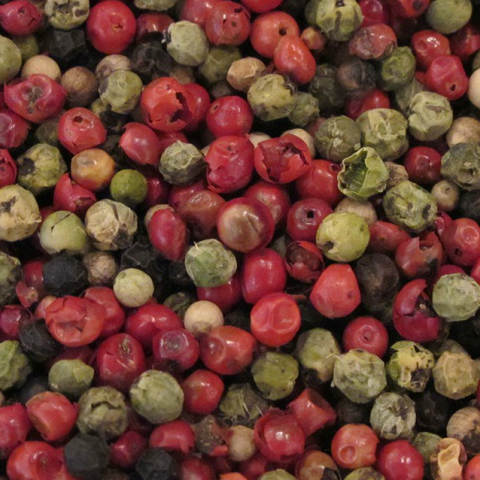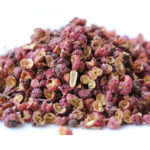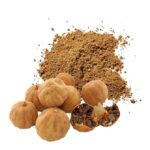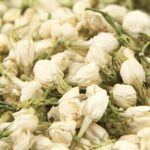4 seasons pepper.
Four seasons pepper consists of green, red, white and black pepper, this combination gives a delicious flavor to dishes. For € 1.95 you can buy 50 grams of four seasons pepper at the herbs king.
The pepper plant is a pendulum plant that can reach a maximum height of 15 meters. It grows in the shade. The plant needs a lot of moisture and a high temperature. The plant bears berries of around 5 mm in size. The green berries grow in clusters about 12 cm long, such as currants. Because they each undergo a different treatment, there are four different types of peppercorns from this plant: black, white, green and reddish-brown. Spanish and pink pepper come from another plant.
4 seasons pepper consists of 4 different colors of pepper including:
Black pepper originates from the unripe harvested green berries, which turn brown to black on drying. The outside of the black pepper is wrinkled.
White pepper comes from the ripe berries of the pepper plant. These berries are soaked in water. That makes them ferment. The berries burst open and the grain appears. Those granules must then be washed well. The white peppercorns are the same size as the black ones. The white pepper is therefore created by removing the peel. The longer production process makes white pepper together with the red pepper the most expensive of the four colors of pepper.
Green pepper is produced from the unripe fruit, but the fruit is preserved, for example in vinegar or salt water.
Red pepper is created when the pepper berry ripens on the plant. Once dried, the berry acquires a red-brown color and becomes a bit sweeter and softer in taste. Red kampot pepper is obtained in this way. Kampot is a province of Cambodia.
Pepper is already known from ancient Indian writings in Sanskrit, where it was called pipali. Via Persia, the use of pepper reached the Egyptians and the Ancient Greeks. The Romans called the condiment Piper, from which the Dutch word pepper comes directly. The Greco-Roman kitchen also used the long pepper (Piper longum), a pepper that tastes sweeter and is peppery only in the aftertaste. This pepper is now difficult to obtain, but it is still used in Chinese herbal medicine. The maniquette pepper, which returned to Europe via the west coast of Africa in the 15th and 16th centuries, was also eaten in Greco-Roman times. The Romans preferred white pepper to black.
Storage advice: store in a cool, dry and dark place.







Reviews
There are no reviews yet.